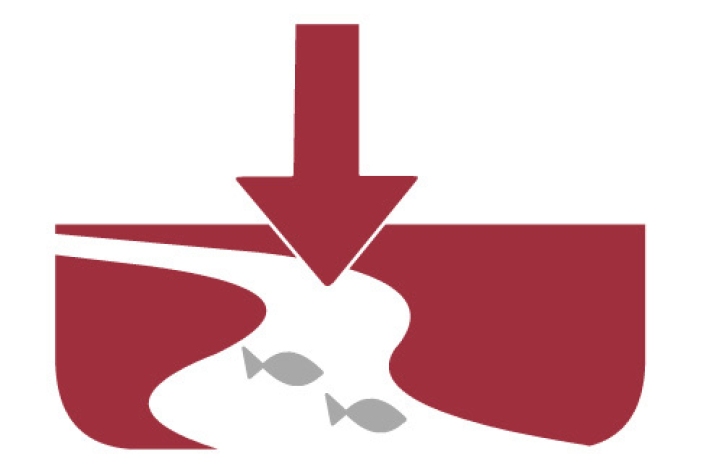Hydro
Hydro-electricity is a renewable energy source that relies on the inflow of water into storage lakes upstream of a dam.
Hydro-electricity is a renewable energy source that relies on the inflow of water into storage lakes upstream of a dam.
The largest dams in Aotearoa are for power generation. The controlled release of large torrents of water from dams provides the raw energy to spin electricity-generating turbines at some 80 power stations around the country. These stations have power generating capacities ranging from 1,000 Megawatts (MW) at Clyde, to less than 1 MW at small stations operated by local electricity supply companies.
The impact of a dam on river flows varies with the size of the dam and the river. Most hydro-electric dams in New Zealand are 'run of the river' schemes, with enough storage for only a few hours or days of generation. This means they do not necessarily modify the seasonal flow patterns but may cause large day-night fluctuations in response to varying power demands. Major disturbance of water flow can affect river channel stability, fish migration, and reduce fish habitat and spawning areas.
- Mitigation and best practice options
- What is Kaitiaki Tools?
- What is the proposed activity or industry?
-
What impacts interest you?
- Chemical contamination
- Mitigation and best practice options
- Dissolved oxygen
- Infectious substances
- Instream barriers and altered water flow
- Modified habitat
- Nutrient overloading
- Sediment
- Temperature changes
- Water clarity
- Loss of riparian vegetation
- Mahinga kai - what species interests you?
- About the resource consent process
-

Impacts of hydro
Impacts of hydro-electric activities on water quality and mahinga kai. -

Mitigation
Ways to minimise the effects of hydro-dams on water quality and mahinga kai.
